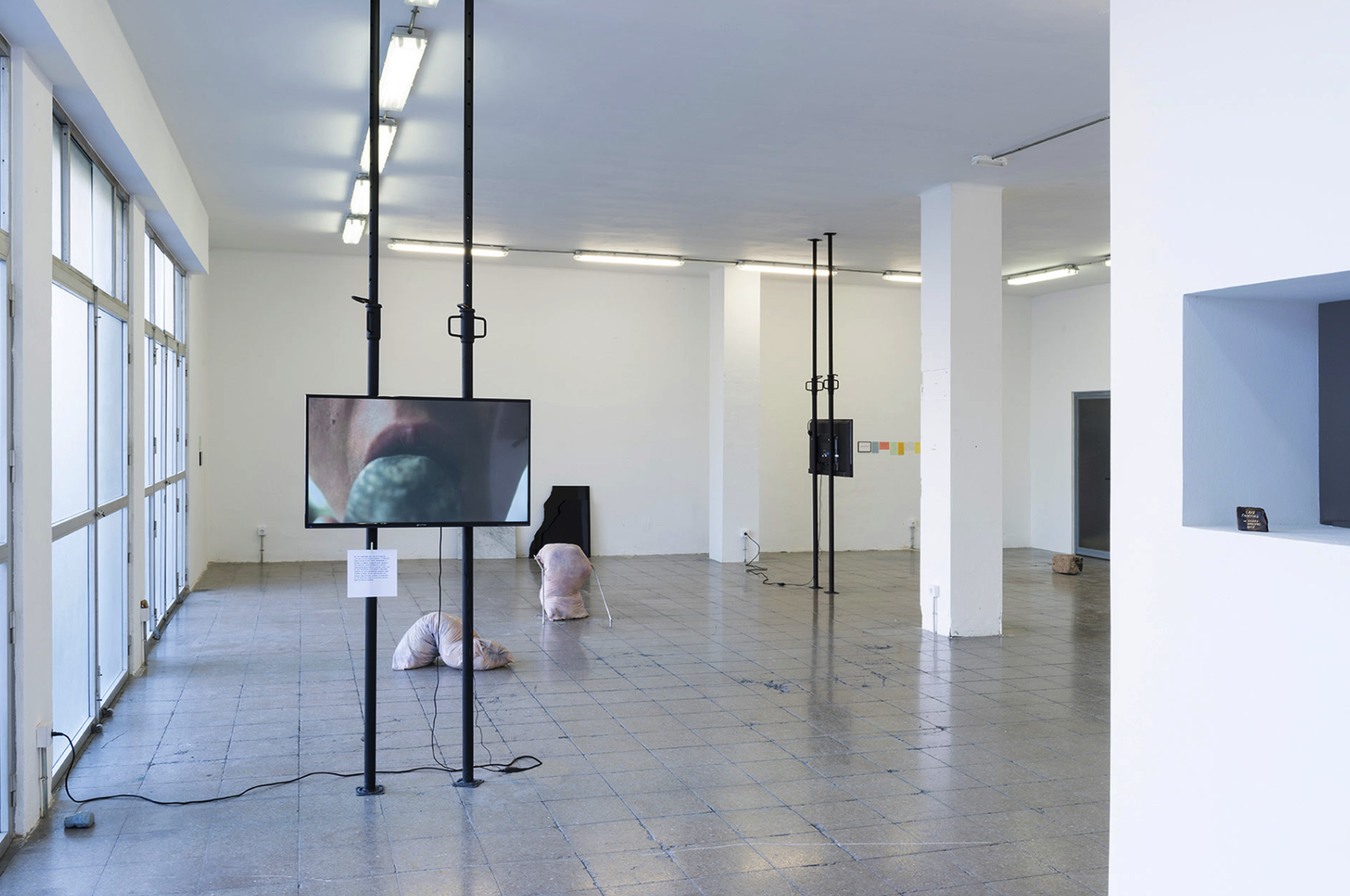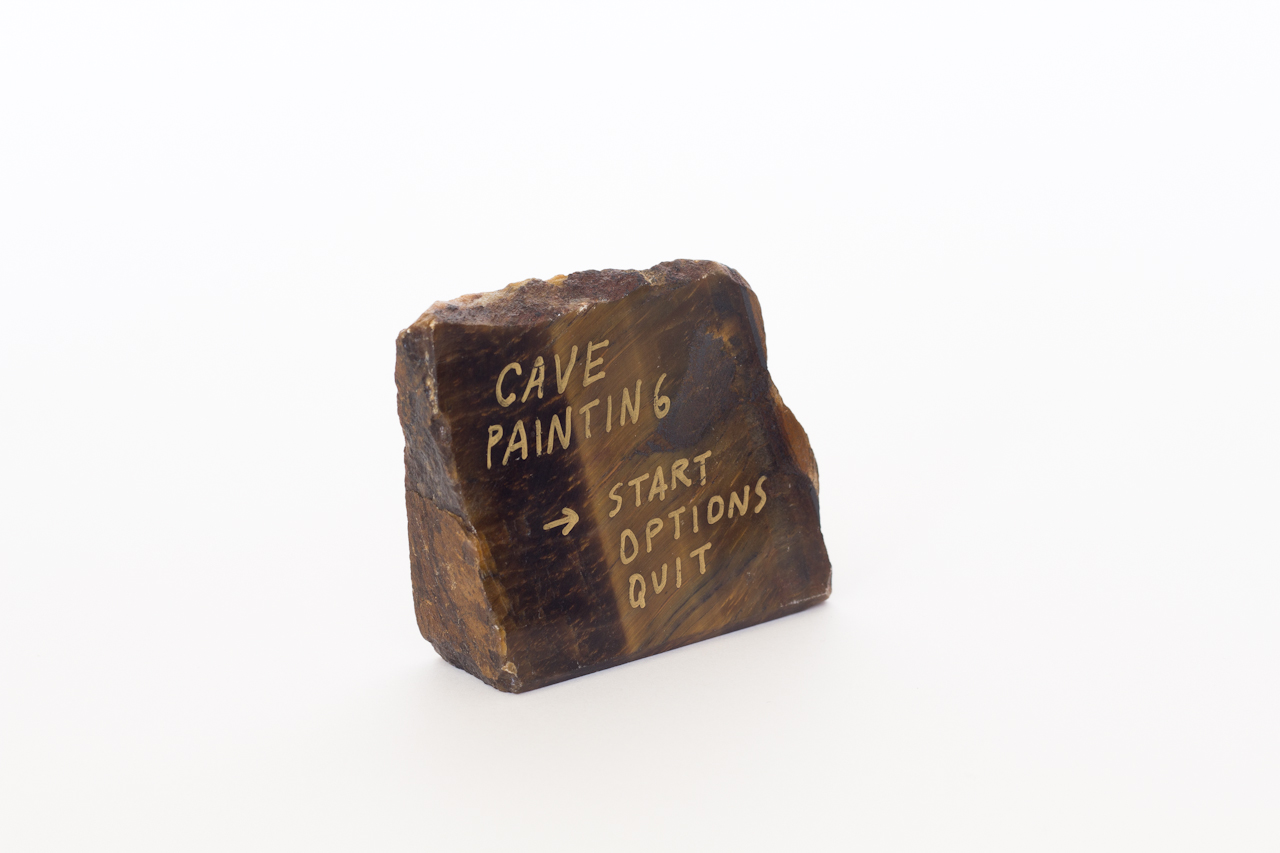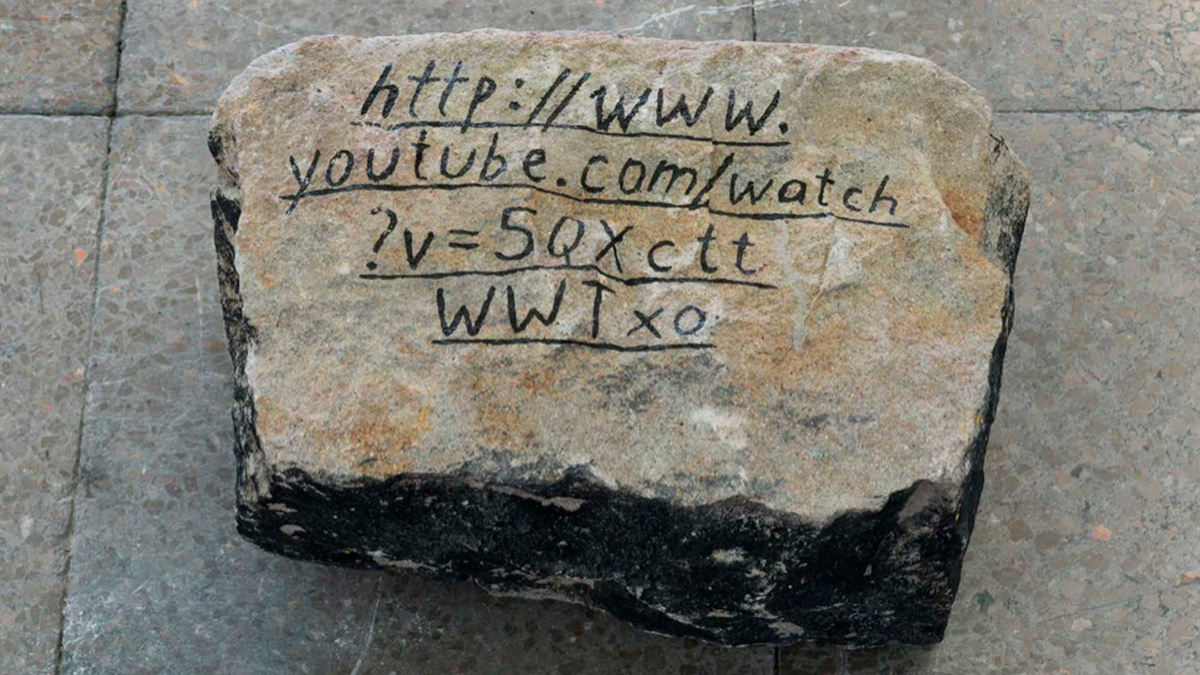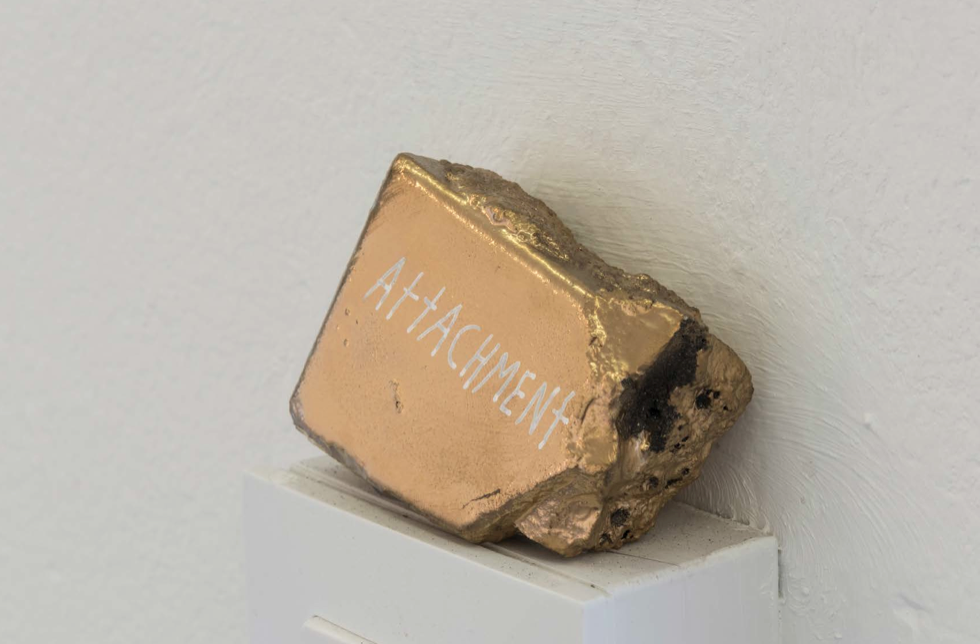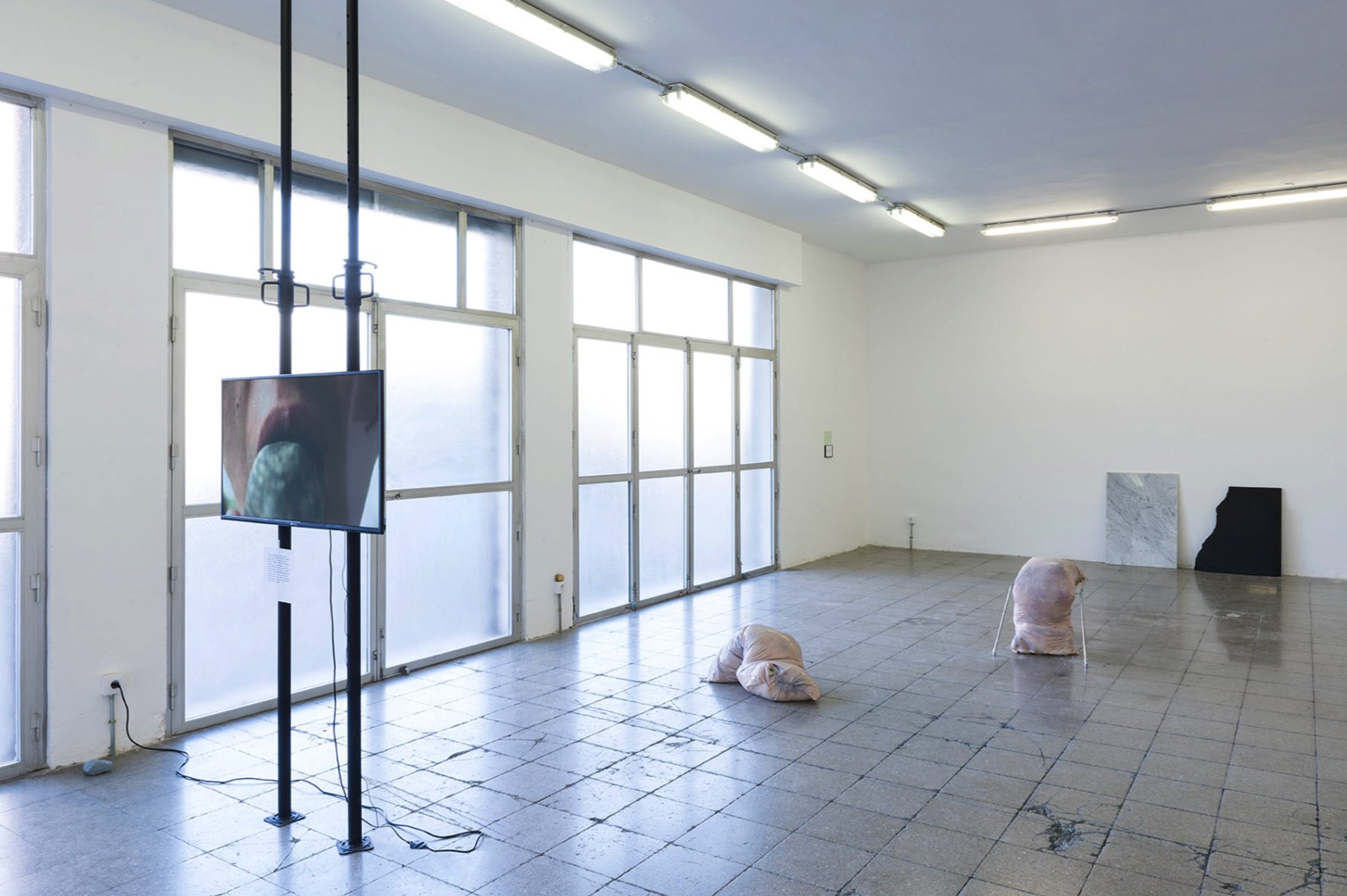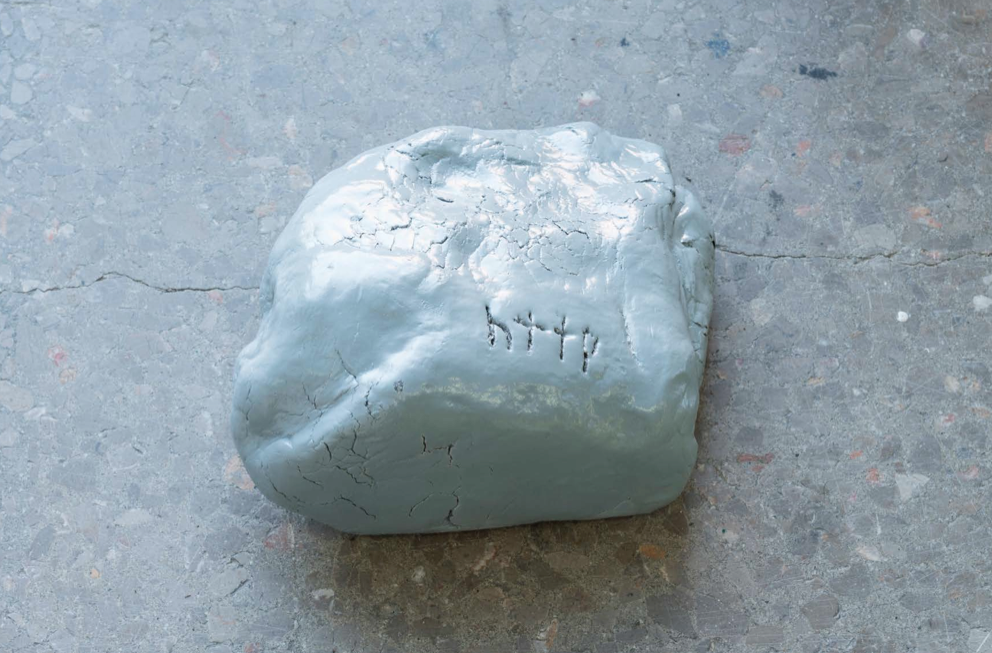
Long live the old flesh
2016
Group show
Curated by Carlos Fernández-Pello
Joseph Grigely, Andrea Gómez, Fernando Baños Fidalgo, Ivana Basic, Juliana Góngora, Nicoline van Harskamp, Teresa Solar
Nogueras Blanchard,
Barcelona
2016
Group show
Curated by Carlos Fernández-Pello
Joseph Grigely, Andrea Gómez, Fernando Baños Fidalgo, Ivana Basic, Juliana Góngora, Nicoline van Harskamp, Teresa Solar
Nogueras Blanchard,
Barcelona
Videodrome (1983) de David Cronenberg es probablemente una de las obras más icónicas del cyberpunk ochentero más lo-fi. Se podría incluso decir que la famosa frase del final, resume de forma brillante cómo la lógica del vídeo estaba penetrando ya el ámbito doméstico y dejando atrás las mentes preclaras de gente como Paik. Nuestra actual cultura de la imagen, el nacimiento del reality show y el crecimiento exponencial de los estudios visuales, todos ellos le deben algo a ese “¡larga vida a la nueva carne!” que grita el protagonista Max Renn, justo antes de pegarse un tiro y de reafirmar así la nueva trascendencia de lo visual. Desde entonces hemos tratado de reconciliarnos con esa pulsión de muerte desatada; tratando de entender esa imagen digital palpitante, erótica, electrónica, más poderosa si cabe que su predecesora mecánica. Gracias a ello, puede que hoy nos relacionemos con las imágenes de una forma tanto más higiénica a cómo sugerían las prótesis gore de Cronenberg, pero esto no ha mermado en forma alguna su poder orgiástico. Al contrario, en el proceso de adquisición de esa nueva carne de la mirada hemos desarrollado un gusto perverso por nuevas extremidades fantasma, órganos inmateriales y presencias inmediatas, deformando así ese pedazo de carne precisamente cancelado por el sacrificio de Renn: el cuerpo. Y es que cuanto más nos adentramos en la utopía de lo visual más sentimos que la carne de nuestro hoy profundo es también una vieja desconocida. Carne que responde a la antigua tradición mágica de la “palabra de mando”, tejida con código y entreverada de señas alfanuméricas. El hecho cierto es que en la era de la red social y de la hipervisualidad compartida nos estamos convirtiendo en más texto y en más palabra que nunca: no ya dándole carne a la palabra, sino siendo engullidos por ésta; por su espacio textual. No como en el documento escrito, elevando el pasado al presente, sino en “tiempo real”. Los estudios textuales siempre han estado atentos a las fluctuaciones del significante lingüístico. Sin embargo su enfoque ya no es necesariamente semiótico o hermenéutico sino material, concentrándose en las alteraciones del documento, la carta, el libro, en las implicaciones sociales y performativas de sus ediciones y revisiones. Algo que en los últimos años, con el advenimiento del texto digital, ha visto ampliada esa carne del texto a algo que va más allá de la mera fisicidad — como diría Ronald Scheifer, a una suerte de “materialismo intangible”. En este sentido, el email puede no diferir demasiado de la vieja carta, pero junto a la mensajería instantánea y las redes sociales redefinen sin duda nuestra noción de presencia textual. Y lo hacen hasta el punto de substituir gestos tan corporales, tan orales, como lo eran el saludo o el abrazo.
Después de todo, puede que no estemos atados a una pistola, como lo estaba Renn, pero sin duda estamos unidos al teclado omnipresente; encarnados también por nuestras prótesis textuales.
“Larga vida a la vieja carne” reúne una selección de trabajos que exploran “la lengua” como un músculo de la boca en lugar de como una expresión idiomática de la cultura: una quinta extremidad que gesticula en la oscuridad, modelando el aire, humedeciendo el habla, saboreando quizás el sentido de las piedras. Mediante distintas interpretaciones de lo inefable, materialidades bucales y volúmenes sordos, los autores expuestos nos invitan a sentir cómo de asémicos pueden llegar a ser los viejos tejidos del texto. Una materia oscura, sólida pero flexible, que se pregunta qué es lo que nos da la carne hoy.
Carlos Fernández-Pello
︎ scroll down for english version
Después de todo, puede que no estemos atados a una pistola, como lo estaba Renn, pero sin duda estamos unidos al teclado omnipresente; encarnados también por nuestras prótesis textuales.
“Larga vida a la vieja carne” reúne una selección de trabajos que exploran “la lengua” como un músculo de la boca en lugar de como una expresión idiomática de la cultura: una quinta extremidad que gesticula en la oscuridad, modelando el aire, humedeciendo el habla, saboreando quizás el sentido de las piedras. Mediante distintas interpretaciones de lo inefable, materialidades bucales y volúmenes sordos, los autores expuestos nos invitan a sentir cómo de asémicos pueden llegar a ser los viejos tejidos del texto. Una materia oscura, sólida pero flexible, que se pregunta qué es lo que nos da la carne hoy.
Carlos Fernández-Pello
︎ scroll down for english version
David Cronenberg’s Videodrome (1983) is probably one of the most iconic pieces of lo-fi cyberpunk of the early 1980’s. We could even argue that it is the famous line uttered at the end by the protagonist, Max Renn, that best summarises how the logic of video had already entered the domestic leaving behind the exclusiveness of prescient minds like Paik’s. Our all-pervasive culture of the image, the birth of virtual reality and also the exponential rise of visual studies, all are somehow indebted to this “long live the new flesh!” that Renn calls out, just before shooting himself and offering his material self to this new trascendence of the visual.
Since then, we’ve been trying to come to terms with this unleashed death-drive of electronic images, beating with a digital erotism, ever more powerful than their mechanical counterpart. Perhaps because of this, today we might attach to images in a more hygienic way than Cronenberg’s gory protheses predicted, but this in no way diminishes their orgastic spell. Quite the contrary, in the making of this new flesh of the gaze we’ve developed a perverse taste for further ghost limbs, for immaterial organs and instant presences, deforming and haunting the obvious piece of meat effaced by Renn’s symbolic sacrifice: the body.
Yet, the more we step into this utopia of impure visual lust the more we feel that the flesh of profound today is also unsurprisingly old; deeply entrenched in the magical tradition of the “word of command”; woven with code and mingled with alphanumeric typos.
The fact is, that in the era of the social network and of hyper-visual sharing we are increasingly becoming more text and more word than ever: not just embodying text, but becoming engulfed by its space: not just as in a written document, unfolding the past in the present, but as in “real time”.
Textual studies have always kept an eye on the fluctuations of the linguistic signifier. Their interest today is not necessarily semiotic or hermeneutic but material: they attend to the physical variations of the letter, the page, the book, the social and performative implications that surround editions, publishing and corrections. In recent years, and with the advent of digital text, this materiality, this flesh of the text, has of course been expanded to comprise something else than mere physicality – or as Ronald Scheifer puts it, an “intangible materialism” . In this sense, email may be no different than a good old letter but, together with instant messaging and social media, it is redefining our notion of textual presence. To the point of substituting gestures so bodily and oral like the handsake or the hug.
After all, we might not be attached to a gun like Renn was, but we are certainly woven to our ubiquitous keyboards; enfleshed too by our textual prosthetics.
“Long live the old flesh” has gathered a selection of works that explore the “thingness” of language, thinking the “tongue” not only as a cultural idiomatic expression but as a muscle of the body. A fifth limb that gestures in the darkness of the mouth, shaping air, watering words, tasting perhaps the meanings of stones. Through the use of ineffable oral performances, buccal materialities and deaf volumes, the authors shown pose how elusive and asemic, yet meaningful, the old flesh of the text may be. Text becomes reunited with its etymology of tissue; a flexible dark matter that asks what gives us flesh today.
Carlos Fernández-Pello
